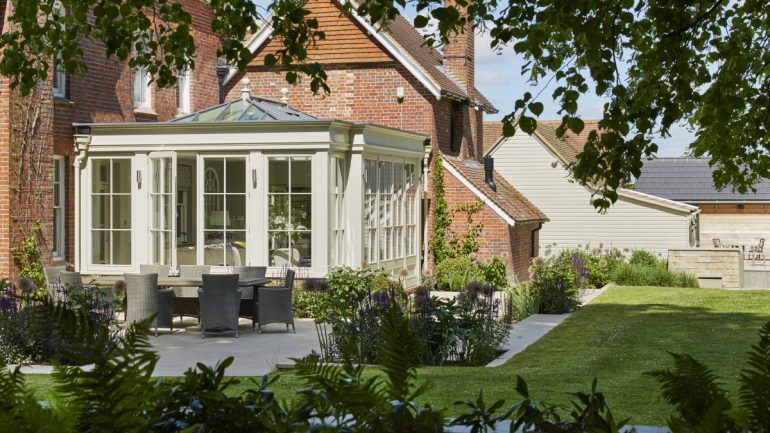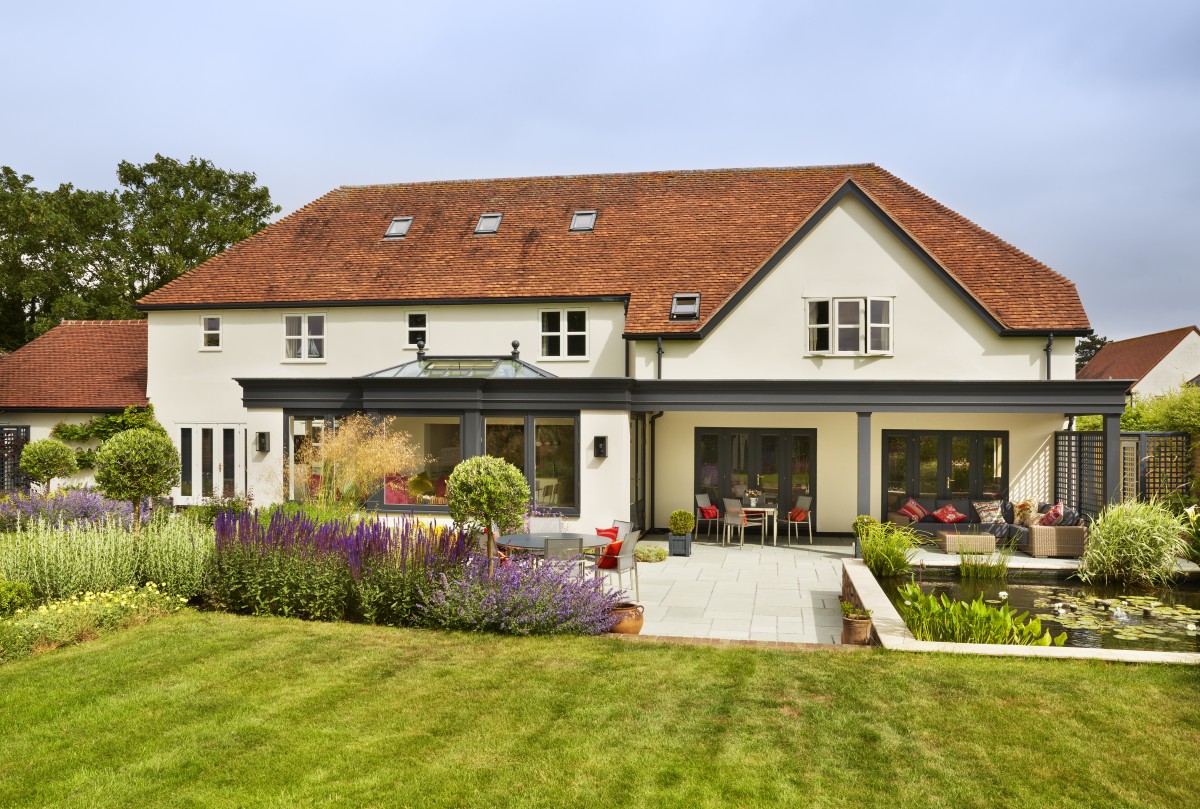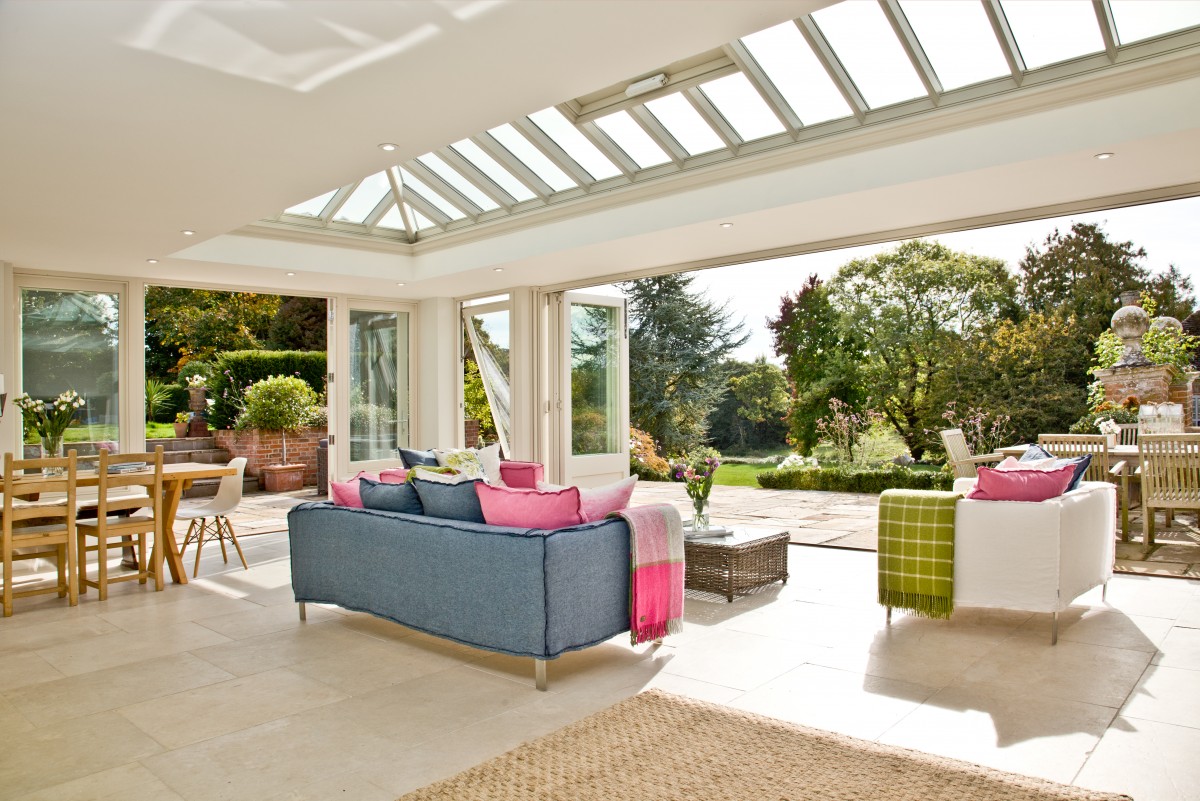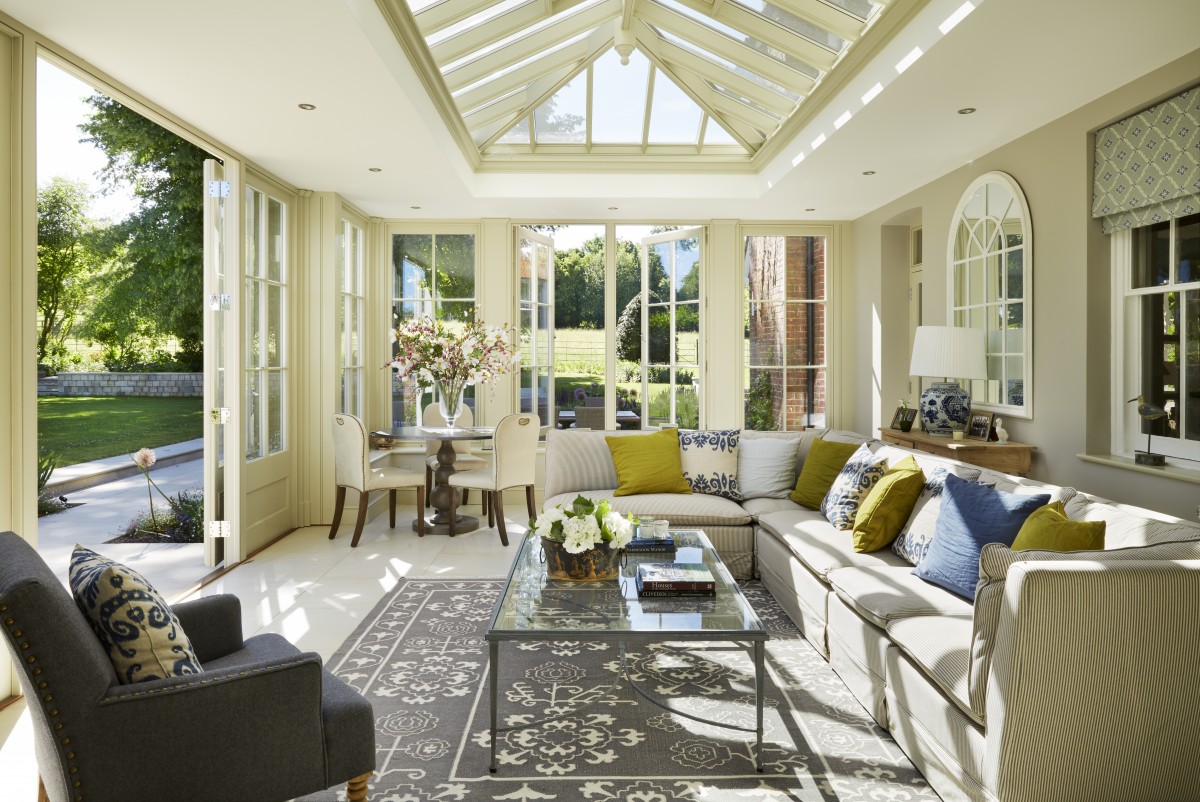A new extension can completely transform your home, acting as the perfect medium between your indoor and outdoor spaces. Creating a bright open-plan space that will change the look and feel of a property; a glazed extension can be used for anything from kitchens and dining rooms to open-plan lounges but above all, they can bring the outside in. Whether you love the idea of opening up the doors and merging your kitchen and patio together for summer BBQs, or like the idea of sitting with a morning coffee as the sun comes up over the garden – a glazed extension helps you to feel more connected with the great outdoors.
In recent years the traditional conservatory has fallen out of favour, and now homeowners are choosing orangeries and garden rooms to harmoniously blend their home with their outdoor space. A well-designed structure will bring a sense of splendour and opulence, with elegant architectural lines and a timeless style, while seamlessly transitioning the living areas through to the garden.
What are the differences between an orangery, garden room and conservatory? This is purely down to the amount of glazing, timber and masonry materials in the structure. We all remember the popular conservatory from the 80’s which would typically have a fully glazed roof and walls sitting on a brick foundation – but these tended to overheat in the summer and feel chilly in the winter.
Consisting of semi-glazed walls, an orangery typically has a roof lantern built on top of a flat roof that lets the natural light stream in in the same way that a conservatory does. Yet instead of feeling cold or stuffy, they are comfortable and inviting throughout the seasons, feeling cool in the summer and warm in the winter. A garden room is similar to an orangery with semi-glazed walls, but with a roof made entirely from tiles instead of a roof lantern. A garden room is more likely to look like a part of the main building rather than an additional add-on, with matching tiles, brickwork and other details. Ensuring a smooth transition between your garden room and your outside space certainly requires a specific approach, because with so much light and space it can be difficult to bring the room together and maintain an opulent aesthetic.
Perfect garden planting
An orangery or garden room needs to be functional, but it also has to have balance and flow. Nothing helps to create that flow quite like a beautiful planting scheme, which will help your extension to blend in with its natural surroundings. An orangery strengthens the relationship that your home has with your garden, offering expansive views of the surrounding greenery and bringing the outside in. Choosing the right plants in your garden can only enhance your new space, providing that they work in harmony with the structure’s scale and proportion.
When you first open the doors of your orangery and step out onto your patio, you’re walking into an extended space that feels like another room. To stay connected to the house, the area immediately outside the extension should look neat, manicured, and well-ordered. As most of a garden room’s structure is glazed, you only need to include low-level planting – perhaps knee height or thigh height so that the views are not interrupted. It’s important for your flower beds to have good depth too, so your home looks like it’s blended in with the surrounding foliage. Avoid thin, narrow strips of plants which won’t have much impact next to an extension. Think about using eight or nine plants together in a large bed or planter, rather than using just a couple. Bring larger plants behind them to create some depth. Plant another bed with the same design for continuity, and you’ll make a real statement in your garden.
It’s all in the flooring
Flooring plays a big part in helping to create a seamless flow between a glazed extension, the garden and other areas of the house. Opt for flooring materials that will work both inside and out, and can be laid flush with the external patio in the garden. Natural stone or porcelain tiles are ideal, as they are strong and durable and incomparable in terms of quality.
Just like the planting, consider choosing paving and other hard landscaping products that are structured and straight to create a formal feel. This might seem like an overly contemporary, bold concept, but this style will keep your outdoor space connected to your home and encourage continuity between the different spaces.
The right interiors
When considering the orangery’s interior design, keep in mind that with all that glazing, the expansive views into the garden should be the main factor to consider. Make sure that nothing obstructs the expansive views of the garden beyond when you walk into the room. Keep the furniture low, choosing deep sofas and shorter ornaments. Essentially, the interiors should not compete with the views of the surrounding landscape, so use neutral, natural colour palettes with blues, slate greys, earthy browns, and greens to reflect the colours outside.
Outdoor living
Elegant planters, ambient lighting, fire pits, and striking outdoor furniture can make your garden a functional living space that’s simply an extension of your own home. From loungers and daybeds to seating and dining tables, furniture is considered to be an essential element of stylish outdoor living. With the right pieces, you can create breakfast bars, sunbathing spots and seating areas for entertaining. A great starting point might be to set up an alfresco dining area in a part of your garden where there is lots of space. Try to leave plenty of room for people to push back their chairs and effortlessly walk to and from the table with plates of food. Use plants to provide a little screening if the larger space feels a little exposed, creating privacy and intimacy.
Clever garden lighting
The beauty of external lighting means that you can still take pleasure from your magical outdoor oasis whilst being cosy and warm inside, looking out from the comfort of your garden room extension or orangery. It also means that you can stay outside for longer during the summer, with the doors of your orangery opened up to encourage the flow between the different spaces. The key to good garden lighting is subtlety. Use it to draw attention to important features like trees or water features, rather than go over the top to try and make the lighting the main factor in your garden. You need the darkness to create contrast and balance, allowing your lighting to effectively catch the eye in specific places.
Trees can turn into magnificent, eye-catching focal points with the use of a well-placed ground light based at the trunk and angled at the branches above. If you have a courtyard, use two or three lights to really emphasise the open space. Using lights around decking and steps can beautifully highlight the different levels of your garden and any surrounding architecture.
Westbury Garden Rooms design and manufacturer bespoke, timeless glazed extensions. For more information visit the companies website www.westburygardenrooms.com





